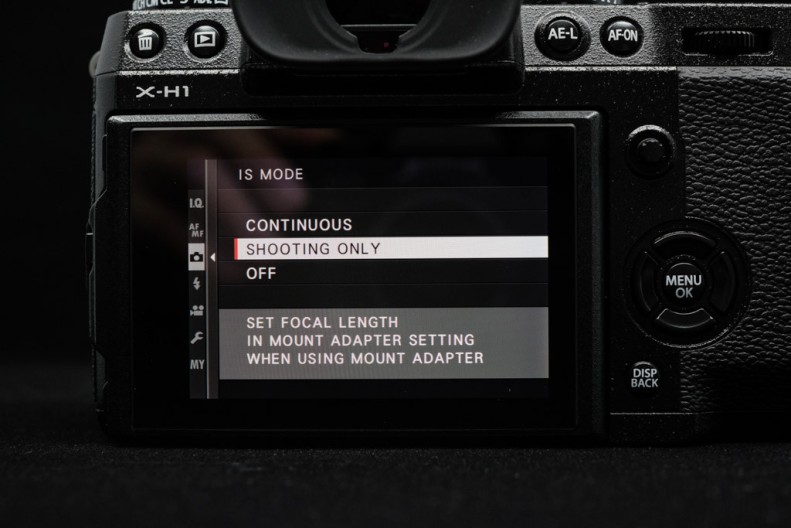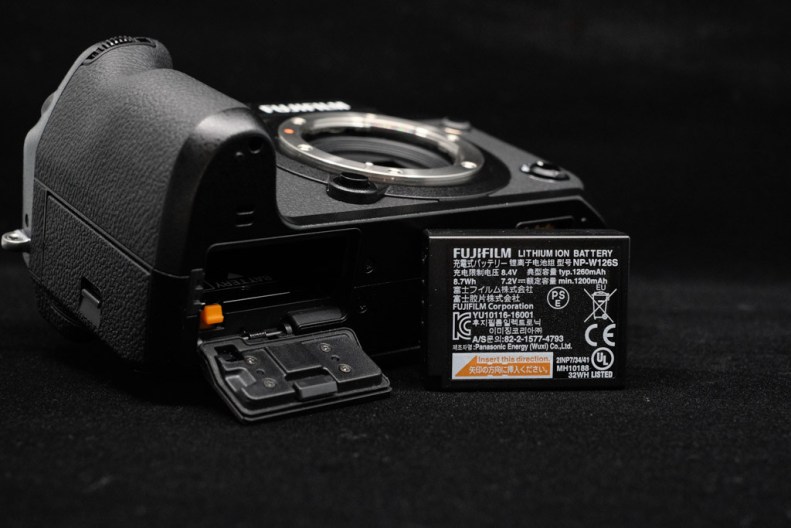Part 2 on a visual comparison of the same image file under different Fujifilm film simulations is here.
In a 2016 interview (link) with Fujifilm’s Takashi Ueno (Senior product planner) , the gentleman had once curtly answered an question put forth by Tomash of Fujilove: “
Tomash: “Are you looking into IBIS (in-body-image-stabilization) on future Fujifilm cameras? If not, why?”
Takashi Ueno: “First of all, our XF mount is not compatible with IBIS. You may be thinking that our mount size is similar to competitors’ and why Fujifilm cannot do it. “… ….”The diameter of our mount was designed for the image circle without IBIS. It means the amount of light at the corners is reduced when the sensor is shifted. We could correct it digitally, but we don’t want to do it…..”
back then I had surmised that was the end of hopes of an IBIS enabled Fujifilm camera until in November 2017 when I was invited to review the next generation flagship X-mount camera for release in 2018, today, 15 Jan 2018 to be exact.
and in the Fujifilm rep’s words:
“I never thought I will say this, but Fujifilm has now taken another big leap forward in the evolution of X-mount with the Fujifilm X-H1 , it has IBIS (in body image stabilization)”


WHY?
One of the things I’ve learned about Fuji is they tend to really think things through. They are seldom the first to employ the newest technology. Like any company, Fuji doesn’t always get it right the first time, but they really do actively think about things, even the most minute details and work their way there and it seems, yes, Fujifilm has caught up tech-wise with a mad pace of growth from nil to a full system in a matter of years.
Ok, we all know there will be a huge list of minute improvements the X-H1 brings over X-T2, but let me focus on sharing the most significant improvements that the Fujifilm X-H1 will bring us (I am trying to keep this review to lesser than 1500 words )
- IBIS, and yes, its 5-axis and not a cropped sensor as once rumoured.
- An improved grip with sub-LCD viewer design adapted from the GFX50S.
- A 3.69 million dots EVF, a whopping 56% improvement over the X-T2’s 2.36 million dots.
- A from ground-up rebuilt silent mechanical shutter to minimise shutter shock.
- Improved build with a 20% thicker magnesium alloy body, that has 8H level of hardness scratch protection coating.
- A new cinematic film simulation Eterna.
- Extensive Video performance upgrades.
- and of course, improved performance – especially in the AFC side.
- Not going to be in details, but the X-H1 comes with a Duo X-Processor Pro and X-Trans-III sensor pair, as opposed to X-T2’s singular X-Processor Pro and X-Trans III sensor.

4 successive shots , in AF-C.
Let’s go through them in details.
before anything else, pls allow me to share my standard disclaimer.
1. The X-H1 was loaned from Fujifilm for 2 weeks and was returned at the end of the review period. I did not receive any payment in any form for this review.
2. This X-H1 in the review is a pre-production model and hence the final production model will only perform better.
3. All images are JPEG SOOC and only edited by cropping and adjustments in exposure. There is no raw support yet for X-H1 files in LR CC as of today.
4. All lenses used for the images were not loaned and belong to me.
5. With the advent of the new film simulation Eterna, most if not all sample images here were shot in this film simulation, unless stated otherwise.
5 axis IBIS.
Fujifilm has clearly considered about how IBIS is going to work in tandem with OIS in various situations, and to clarify how it will work in the 5 most common situations:
– a: X-mount Lens w/o OIS (e.g. XF16-55mm F2.8) : 5 axis IBIS (in body)
– b: X-mount Lens with OIS (e.g. XF18-55mm F2.8-4) : 3 axis (in body) , 2 axis (Pitch and Yaw in lens)
– c: X-mount Lens with OIS (e.g. XF80mm F2.8) : 1 axis (in body), 4 axis (in lens)
– d: Zeiss X-mount w/o OIS : 5 axis IBIS (in body)
– e: M-Mount adapter : 3 axis (in body) and so on…

This means from now, handheld long exposure shots is a reality for Fujifilm users.

X-H1, XF35mm F1.4 at ƒ16 and 11 seconds, handheld. (Provia)
(no, this is indeed a handheld 11 seconds shot but disclaimer – it is obvious my body was braced tight against a wall and I had so many failed attempts I lost count (because well, I’m a living thing) and this shot was an extreme to really test to see how far I can push the IBIS in the X-H1)

X-H1, XF35mm F1.4 at ƒ16 and 5 seconds, handheld. (Provia)
For most users who will get 1-2 second SS shots with any IBIS enabled camera, 5 seconds is still doable with the X-H1’s stabilisation, in general I find the performance of the X-H1’s IBIS on par with what Olympus has achieved very well for its IBIS system. I can’t say much about Sony as I don’t use their cameras except the RX0.
which anyway, most importantly and not even comparing, the key point is the inclusion of in camera stabilisation up to 5.5 stops also gives new life to the Fujifilm X-system, not just in long exposures but also in telephoto shots where it is critical to minimise shake at the longer focal length.

X-H1, XF50-140mm F2.8 at ƒ2.8. (Eterna)
Improved grip, sub-LCD and now, a silent mechanical shutter.



Key is the inclusive of newly developed shock absorbers in the shutter mechanism and the sub-LCD and improved grip borrowed from the GFX50S which works in tandem to maximise the performance of in-body stabilisation and minimise shutter shock.
You need to hear and feel the new shutter click for yourself to know how satisfying it is.
The top dials are reminiscent of the X-T2 series, ensuring a smooth crossover between models and other than S, CL, CH we now have a new mode on the Drive Dial ‘CM‘ that allows 6fps with live-view & E-front curtain shutter to minimize blackout time for fast action shots.
Upgraded EVF, Touch screen and Video improvements.
The X-H1 also comes out of the box with 4K 17:9 cinema aspect support and now F-Log SD card recording (4K/Full HD) with selectable 4K bitrates of 200 Mbps, 100 Mbps, 50 Mbps. Lastly, there is now options of slow motion recording up to 5x.
Other numerous upgrades include a new internal mic (48kHz/24bit) and significantly improved AFC (tracking) performance.


The inclusion of touch-screen capabilities just like the GFX50S opens more creative opportunities in handling.

The already huge EVF of the X-T2 has gotten an immense boost of an additional 56% more pixels to 3.69 million pixels now in the X-H1 moving the already great X-T2 EVF into a different league.


Shooting the X-H1 brought a totally different experience and the new silent shutter played a huge part. The X-H1’s shutter is much more ‘gentle’ and provides minimum disturbance to the shooting experience.
The build of the X-H1 has also improved significantly, with a thicker chassis and a much more durable coating. Double UHS-II slots, USB3.0 support form part of the package too.


and lastly, the new film simulation Eterna.
Eterna is essentially Fujifilm’s take on a cinema oriented film simulation and it’s release is obviously timed to work in tandem with the MK lenses range . It possesses a lower contrast and saturation and coupled with the system’s great dynamic range and now better tonality, provides its own distinct character and yes, it is one lovely film simulation to shoot.

X-H1, XF35mm F1.4 at ƒ2. Eterna.

X-H1, XF50-140mm F2.8 at ƒ2.8 Eterna.

X-H1, XF50-140mm F2.8 at ƒ2.8 Eterna.

X-H1, XF16-55m F2.8 at ƒ4 Eterna.
Eterna felt like Classic Chrome but with a different tinge of nostalgia.
While some will simply use the word ‘cinematic’ to describe the feel of it, to me its more, somewhat like Classic Chrome desaturated but with improved tonal range.

X-H1, XF35mm F1.4 at ƒ2.8 Eterna.

X-H1, XF23mm F2 at ƒ8 Eterna.

X-H1, XF35mm F1.4 at ƒ2.2 Eterna.

X-H1, XF35mm F1.4 at ƒ2 Eterna.
Eterna is versatile. Not like Velvia where one is mostly limited to landscape or Astia for portraits and on. Like Provia, Eterna renders a gentle touch onto images.

X-H1, XF35mm F1.4 at ƒ2 Eterna.

X-H1, XF35mm F1.4 at ƒ1.4 Eterna.

X-H1, XF16-55mm F2.8 at ƒ4 Eterna.

X-H1, XF16-55mm F2.8 at ƒ2.8 Eterna.

X-H1, XF16-55mm F2.8 at ƒ3.2 Eterna.
And not to forget the X-H1 does have all the other film simulations we know, of which Astia is a personal favourite.

X-H1, XF23mm F2 at ƒ2 Velvia.

X-H1, XF16-55mm F2.8 at ƒ4 Provia.
Conclusion.
Overall, my feelings at the beginning of the review was well, IBIS wasn’t something I needed however as I continued along with the X-H1 on this 2 weeks journey I realised what Fujifilm had done was the same as what they did to the X100F from the X100T.
The X-H1 is the cumulation of numerous minute yet significant improvements into an entirely different league of handling and experience. The X-H1 is not a boosted X-T2 but is its own character and in its own league for the demanding professional users.


X-H1, XF23mm F2 at ƒ2.8 Eterna.
and again, here’s presenting the Fujifilm X-H1, the step towards the next leap in Fujifilm’s innovation.

Thank you for reading. 🙂
